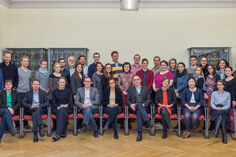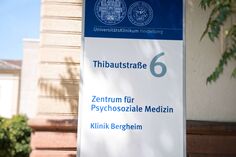Visual Evoked Potentials in Migraine Patients - Alterations Depend on Pattern Spatial Frequency
Rieke Oelkers 1, Konrad Grosser 1, Eberhard Lang 2, Gerd Geisslinger 1, Gerd Kobal 1, Kay Brune 1, Jörn Lötsch 1
Department of Experimental and Clinical Pharmacology and Toxicology 1 and Department of Neurology 2, University of Erlangen-Nürnberg, Germany
Abstract
Visual information is conducted by two parallel pathways (luminance- and contour - processing) which are thought to be differentially affected in migraine and can be investigated by means of pattern reversal visual evoked potentials (VEPs). Components and habituation of VEPs at four different spatial frequencies were compared between migraineurs (n = 26; 13 without aura, MO; 13 with aura, MA) and healthy volunteers (n = 28). Migraineurs were recorded in the headache-free interval (> 72h after / before an attack). Five blocks of 50 responses to checkerboards of 0.5, 1, 2 and 4 cycles per degree (cpd) were sequentially averaged and analyzed for latencies and amplitudes. Differences in VEPs were dependent on spatial frequency. Only when small checks were presented, i.e. at high spatial frequency (2 and 4 cpd) latency of N2 was significantly prolonged in MA and tended to be delayed in MO. Habituation behavior was not significantly different between groups at the employed stimulating conditions. Prolonged N2 latency might be explained by lacking or attenuation of a contour-specific component N130 in migraineurs indicating an imbalance of the two visual pathways with a relative predominance of the luminance - processing Y - system. These results reflect an interictally persisting dysfunction of precortical visual processing which might be relevant in migraine pathophysiology.




